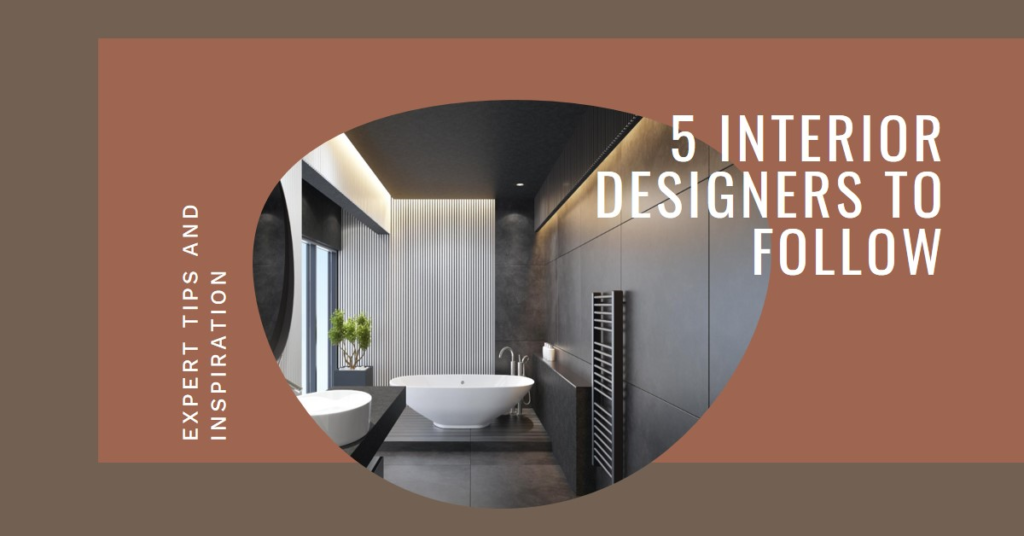
Table of Contents
1. Online Portfolio Showcase: Captivating Digital Presence
Marketing, Building a captivating online portfolio is essential for showcasing your skills, style, and expertise as an aspiring interior designer. Create a professional website or use portfolio platforms to showcase your best projects, design aesthetics, and design process. Include high-quality images, project descriptions, client testimonials, and before-and-after transformations to highlight your capabilities and storytelling skills.
Utilize social media platforms such as Instagram, Pinterest, and LinkedIn to share your portfolio content, behind-the-scenes glimpses, design tips, and industry insights. Engage with your audience, collaborate with influencers or fellow designers, and participate in design challenges or online forums to expand your reach and visibility within the design community. A strong online portfolio and active social media presence not only attract potential clients but also establish your brand identity and credibility as a professional interior designer.
2. Content Marketing Strategies: Educate and Inspire
Content marketing is a powerful tool for aspiring interior designers to educate, inspire, and attract their target audience. Create valuable content such as blog posts, articles, e-books, or video tutorials that showcase your design expertise, industry knowledge, and design philosophies. Address common design challenges, share design trends, provide styling tips, and offer practical advice on home improvement and interior design.
Collaborate with home decor brands, influencers, or industry experts to create guest posts, co-branded content, or design collaborations that resonate with your audience and expand your reach. Leverage SEO strategies to optimize your content for relevant keywords and topics, improving your visibility in search engine results and attracting organic traffic to your website or blog. Consistent and quality content establishes you as a trusted authority in interior design, fosters engagement with your audience, and drives leads for your design services.
3. Virtual Design Consultations: Personalized Client Experiences
Incorporate virtual design consultations into your marketing strategies to offer personalized design services and engage with potential clients remotely. Utilize video conferencing platforms to conduct initial consultations, design presentations, mood board reviews, and design concept discussions with clients regardless of their location. Showcase your design process, listen to client preferences, gather project requirements, and provide professional recommendations and design solutions tailored to their needs and style preferences.
Promote your virtual design consultation services through your website, social media channels, and email marketing campaigns, highlighting the convenience, flexibility, and value-added services you offer. Offer introductory packages, free consultations, or design workshops to attract new clients and showcase your design expertise firsthand. Virtual design consultations not only expand your client base beyond geographical limitations but also demonstrate your adaptability and commitment to delivering exceptional design experiences.
4. Collaborate with Influencers and Brands: Amplify Your Reach
Collaborating with influencers, home decor brands, furniture manufacturers, or design publications can significantly amplify your reach and exposure as an aspiring interior designer. Identify influencers or brands whose aesthetic aligns with your design style and target audience, and propose collaboration opportunities such as sponsored content, design partnerships, product placements, or brand ambassadorships.
Participate in design showcases, exhibitions, or industry events where you can network with influencers, brands, and potential clients, showcasing your portfolio and establishing valuable connections within the design community. Collaborative projects not only expose your work to a wider audience but also lend credibility and endorsement from established names in the industry. Leverage partnerships to cross-promote content, host design events or workshops, and engage with new audiences interested in interior design and home decor.
5. Showcase Design Expertise through Workshops and Webinars
Hosting design workshops, webinars, or online masterclasses is an excellent way to showcase your design expertise, share industry insights, and attract potential clients interested in learning about interior design. Choose topics relevant to your target audience such as color theory, space planning, design trends, DIY home decor, or sustainable design practices, and develop engaging and informative content for your sessions.
Promote your workshops or webinars through social media, email newsletters, and targeted online advertisements to reach aspiring designers, homeowners, and design enthusiasts. Offer early bird discounts, free resources, or downloadable guides related to your workshop topics to encourage sign-ups and engagement. During the sessions, interact with participants, answer questions, provide design tips, and showcase your portfolio projects to inspire and educate attendees about your design style and capabilities. Hosting educational events establishes you as an industry expert, builds trust with potential clients, and generates leads for your design services.
6. Networking Events and Industry Associations: Building Professional Relationships
Attend networking events, conferences, seminars, and industry association meetings to connect with fellow designers, industry professionals, suppliers, and potential clients. Networking provides opportunities to exchange ideas, gain industry insights, collaborate on projects, and build a professional support network within the design community.
Join relevant industry associations such as ASID (American Society of Interior Designers), IIDA (International Interior Design Association), or local design chapters to access resources, educational opportunities, and networking events specific to interior design professionals. Actively participate in association events, committees, or leadership roles to raise your profile, contribute to the design community, and establish yourself as a respected professional in the industry.
7. Strategic Branding and Positioning: Define Your Unique Value Proposition
Define your unique value proposition, design style, target audience, and competitive advantages to create a strong brand identity and positioning in the market. Develop a compelling brand story, logo, visual identity, and messaging that resonates with your ideal clients and communicates your design philosophy, approach, and values effectively.
Craft a professional portfolio showcasing your best projects, design process, client testimonials, and industry accolades to demonstrate your expertise and credibility as an interior designer. Highlight your unique selling points such as sustainable design practices, innovative solutions, personalized approach, or specialized design niches to differentiate yourself from competitors and attract clients seeking specific design expertise or aesthetics.
8. Client Referral Programs and Testimonials: Leverage Satisfied Clients
Encourage client referrals and testimonials to leverage satisfied clients as brand advocates who can vouch for your design skills, professionalism, and customer satisfaction. Request feedback from clients after project completions, and showcase positive testimonials, reviews, or case studies on your website, social media, and marketing materials to build trust and credibility with potential clients.
Implement client referral programs offering incentives, discounts, or rewards for clients who refer new business to you, encouraging word-of-mouth referrals and expanding your client base organically. Maintain strong relationships with past clients through follow-ups, newsletters, holiday greetings, or design tips to stay top-of-mind for future projects and referrals.
9. SEO and Digital Marketing Strategies: Enhancing Online Visibility
Invest in search engine optimization (SEO) strategies to improve your website’s visibility and ranking on search engines such as Google, Bing, and Yahoo for relevant keywords and search queries related to interior design services. Optimize your website content, meta tags, image alt text, and page descriptions with targeted keywords, local search terms, and location-based information to attract local clients searching for interior designers in your area.
Create valuable and shareable content such as blog posts, design guides, infographics, or videos that address common design questions, trends, and solutions, driving organic traffic to your website and establishing your authority in interior design. Utilize pay-per-click (PPC) advertising, social media advertising, and email marketing campaigns to promote your services, showcase your portfolio, and engage with potential clients interested in interior design projects.
10. Continuous Learning and Professional Development: Stay Updated and Relevant


Commit to continuous learning, skill development, and staying updated with industry trends, technologies, and best practices to remain competitive and relevant in the interior design field. Attend workshops, seminars, webinars, and online courses related to interior design, business management, marketing strategies, and emerging design tools and software to enhance your skills, expand your knowledge, and adapt to evolving client needs and market trends.
Obtain professional certifications such as NCIDQ (National Council for Interior Design Qualification), LEED (Leadership in Energy and Environmental Design), or specialized design certifications relevant to your niche or target market to demonstrate your expertise and commitment to quality and professionalism in interior design. Showcase your certifications, affiliations, and industry memberships on your website, social media profiles, and marketing materials to build trust and credibility with potential clients and industry partners.
By implementing these innovative marketing ideas and strategies, aspiring interior designers can elevate their brand presence, attract quality clients, and build a successful and rewarding career in the dynamic and creative field of interior design.


